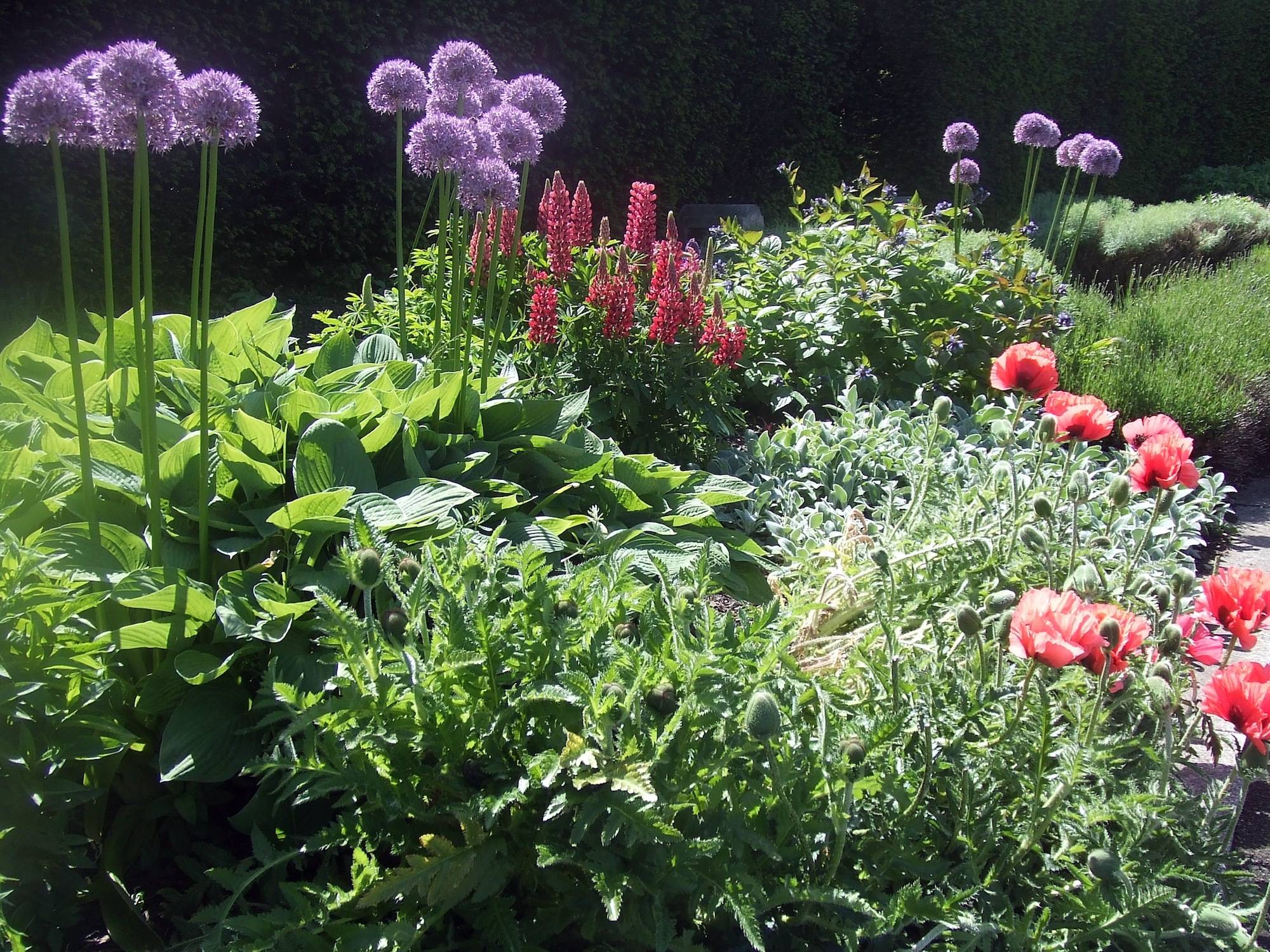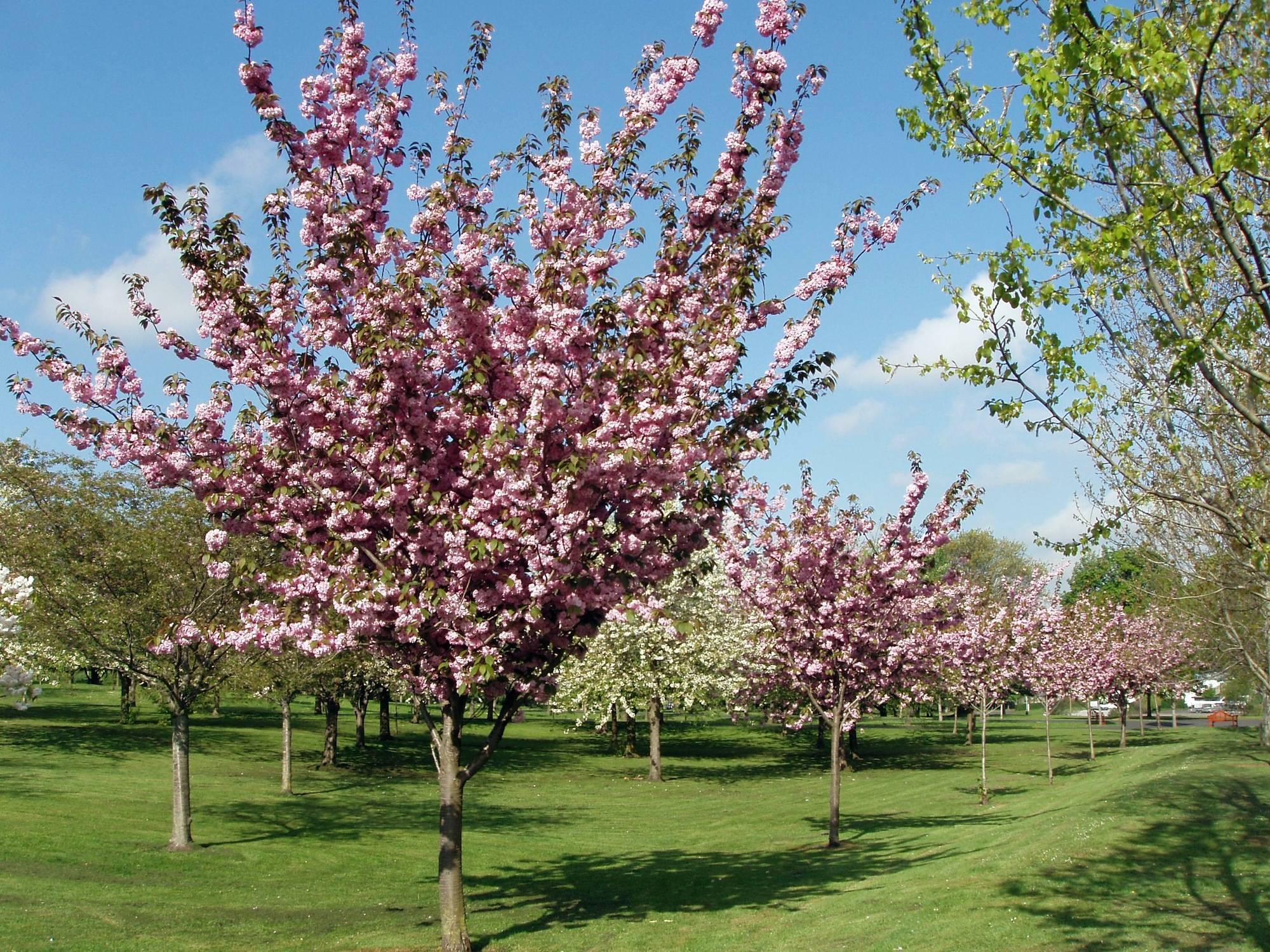Horticulture and Arboriculture
The Gardens were designed by perhaps the greatest contemporary British architect, Sir Edwin Lutyens, and are characteristic of his style of simple dignity. While Lutyens was regarded as a conservative architect, his work did not lead towards the modern movement; it always showed invention and ingenuity. His work after the First World War was more classical in style which is clearly evident at Islandbridge. The gardens as a whole are a lesson in classical symmetry and formality and it is generally acknowledged that his concept for the Islandbridge site is outstanding among the many War Memorials he created throughout the world.
Lutyens was very familiar with the Irish landscape, having worked at Howth Castle for Gaisford St Lawrence in 1906 with the creation of the Sidney Parterre. However, his designs for Heywood Gardens, Abbeyleix for Colonel Hutcheson-Poe in 1906 would have brought him in contact with one of the original members of the Memorial Committee. The Lutyens gardens at Heywood were inserted into a mid-eighteenth-century landscape park and have similar compartments and sunken areas.
The scheme at Islandbridge embodied the idea of a public park (fifty acres) on the south bank of the River Liffey, in full view of the Magazine Hill and the Phoenix Park. In this Park, is included a Garden of Remembrance and War Memorial of approx twenty-five acres, bounded by the Horseshoe Road. The ‘Memorial Garden’ is not a Park – it is a Garden of Remembrance in the centre of a larger Parkland. The gardens were designed along a strong north-south axis, leading from the entrance at Con Colbert Road down to the Great Cross and the War Stone, and to the Temple on the terrace above the River Liffey.
Lutyens was brought up in Surrey in the 1870s and 1880s, where old craft traditions were still being used. His love of local materials and the contrasting moods of the various ‘compartments’ of the gardens, all testify to his artistic genius. The planting scheme was also of vital importance to Lutyens and a committee of eminent Irish horticulturalists was formed to advise on the matter. Sir Frederick Moore, the former keeper of the National Botanic Gardens, Mr A. F. Pearson, Superintendent of the Phoenix Park, Mr Beaston, also of the Botanic Gardens and Mr Anderson, former Park Superintendent were members of the committee. The planting was undertaken by the Phoenix Park forestry staff under the supervision of Mr A. F. Pearson, who also oversaw the selection of the roses.
The Memorial Lawn
The Memorial is designed as a garden and Lutyens, during his many visits always took pains to impress this aspect upon those carrying out the work. As the gardens were built on a slope, the various compartments had to be levelled and graded. Some of the structures are on twelve-foot foundations but these are hidden with the grading of the slopes. The simple War Stone in the centre of the lawn, the magnificent Cross standing at the head of an imposing semi-circular flight of steps, the Bookrooms with their graceful columns, the fine fountains with their broad basins, the pergolas, gate piers and niches; all these arrest the attention and compel admiration. But to Lutyens they were but the setting for the flowers and blossoming trees which are provided abundantly.
The Rose Gardens
On either side of the central green lawn, through pergolas of granite columns and oak beams, are the sunken rose gardens. These have central lily ponds as focal points and are encircled by yew hedges. Apart from the obvious symbolism of death and resurrection as represented by the ‘altar’, ‘candles’ and cross, Lutyens set out to create a tranquil memorial garden devoid of all military symbolism. It has been suggested, though, that the sunken rose gardens were inspired by the Roman arenas for gladiatorial combat and that the pergolas clothed with clematis and wisteria are reminiscent of places of rest for the wounded combatants.
The original rose varieties, purchased in multiples of fifty, included popular varieties such as ‘Shot Silk’, Madame Butterfly’ and ‘Etolie de Hollande’. Over 4,000 roses were supplies by Watson’s nurseries in Killiney. In the recent rejuvenation of the rose beds, it was considered appropriate to include the famous ‘Peace’ rose.
The Herbaceous Borders
Lutyens was greatly influenced by one of his first clients, Gertrude Jekyll (1843-1932), an artist and gardener, when he designed Munstead Wood for her in 1896. They collaborated on many projects but with her failing eyesight in latter years, she was unable to travel to view the schemes and thus never worked on the War Memorial Garden plans.
The Gertrude Jekyll-style herbaceous border, which encircle the rose gardens, provide wonderful displays in spring and autumn, so as not to compete with the roses. Blues, pinks, greys, and whites dominate the borders and have appeal year round, particularly in November for the Commemorative services. For example Campanula lactifolia ‘Macranta’, Lavendula ‘Munstead’, Rosa ‘ Nathalie Nypels’, and Stachys byzantina ‘Silver Carpet’ appeal to the various senses of sight, smell and touch.
Formal Trees
Eight holly trees originally stood as ‘Generals’ on the North Terrace overlooking serried ranks of flowering cherries or ‘foot soldiers’. The formality of the lines of Prunus ‘Ukon’, ‘Hisakura’ and ‘Watereri’ contrast boldly with the informality of the parkland trees beyond, which were chosen to give variety and colour, seasonal interest and contrasting form. It is worth noting the landscape impact created by eighty-year-old Atlantic cedars, purple beech, evergreen oaks, silver birches, whitebeams and scarlet hawthorns at Islandbridge.
Radiating out from the temple is a series of tree-lined roads and paths. In Lutyen’s original design, each of these avenues was to have focused on a particular landscape feature. The formality of these paths and roads is reinforced by the judicious choice of trees to give a series of avenues of contrasting form, colour and height. The outer Horseshoe Road was planted with a single line of silver limes. Two diagonal avenues were planted with golden populars. Magnificent elms once adorned both the central avenue and the two short avenues which join the sunken rose gardens within the diagonal avenues. Unfortunately, these succumbed to Dutch elm disease in the early 1980s and were replaced with lime trees. The lower avenue, which runs at right angles to the central avenue, was planted on each side with Norway and silver maples.
The Parkland
The parkland into which the Garden of Remembrance is situated extends to over fifty acres. The high amenity grassland and path along the River Liffey forms an integral part of the parkland that is regularly used by walkers and cyclists, as the path is an important linear link between Chapelizod village and the South Circular Road. ‘Lutyens’-style seats are located throughout the parkland with a number of picnic tables at key locations. Passive recreation is encouraged throughout the park.
The recreation ground to the north and south of the entrance road consist of two GAA and one soccer pitch which are leased to various sports groups. Fencing was removed in recent time to better integrate these areas with the Parkland. Active recreation is restricted to these areas.
Tree planting throughout the parkland is in informal groups and as screen or boundary planting. There are over 700 trees within the whole park, with limes, cherries, populars and acers being the main species. The trees are managed from a health and safety perspective in accordance with the OPW Tree Management Policy 2014. The lands to the west were planted with oak, beech, popular and alder to form a visual buffer with the Chapelizod By-Pass in the 1990s. This planting today frames and gives shelter to the gardens but is not accessible to the public. Any trees that are removed are replaced with the same species in keeping with the original horticultural committee recommendation, save for climate change impacts.
While the grass panels are regularly mown, the grass banks to the south of the Memorial Lawn have been allowed to naturalise due to the abundance of wild flowers present. Orchids and cowslip thrive here and the management regime is for a late summer mowing. Bulb planting is interspersed throughout the grounds.


